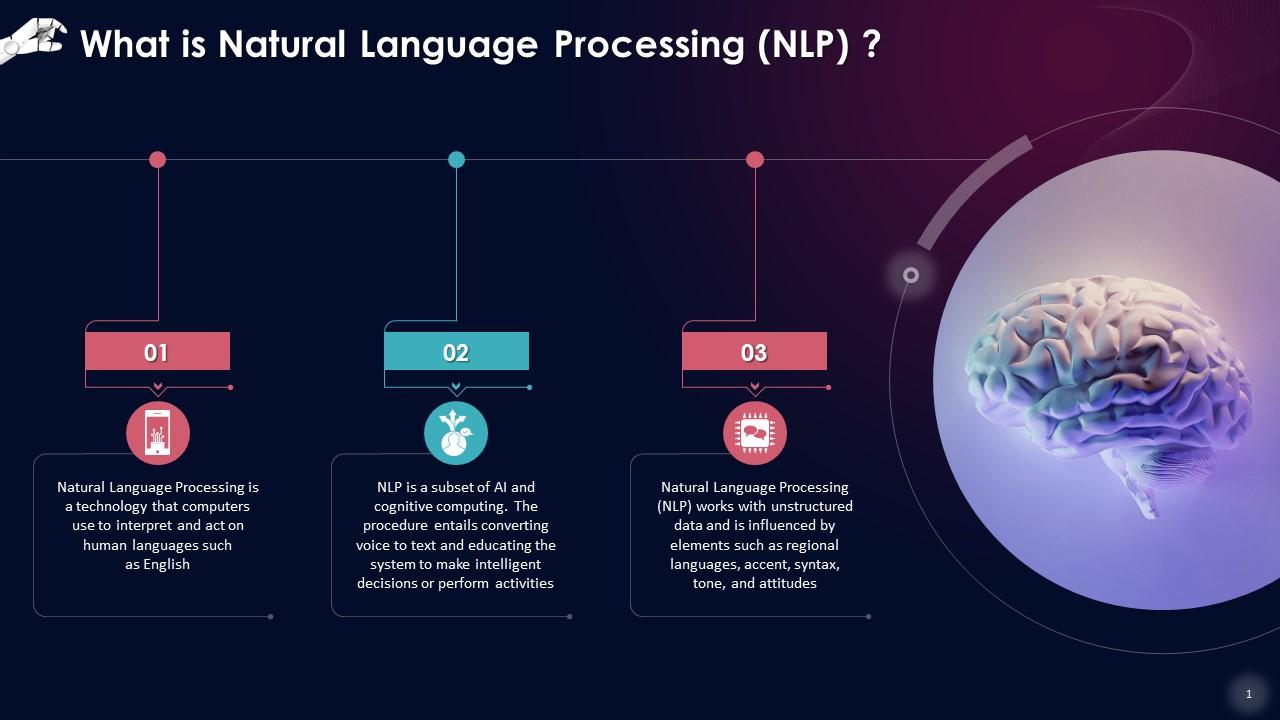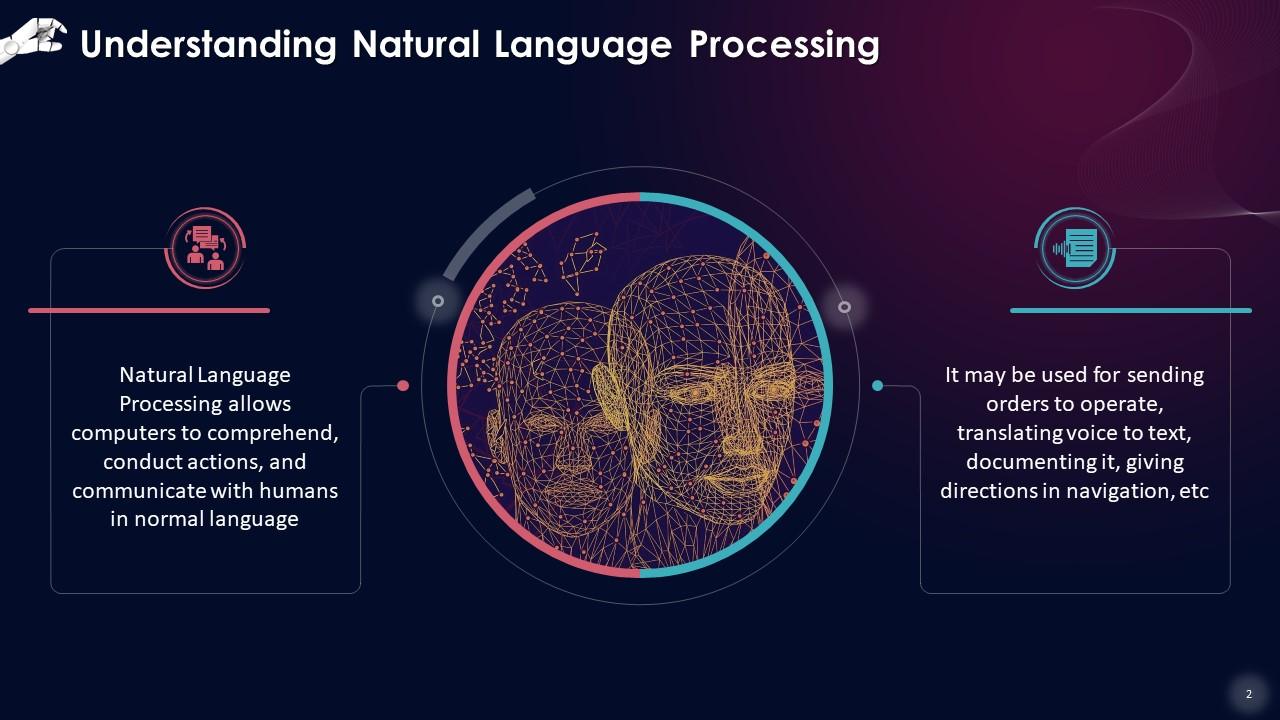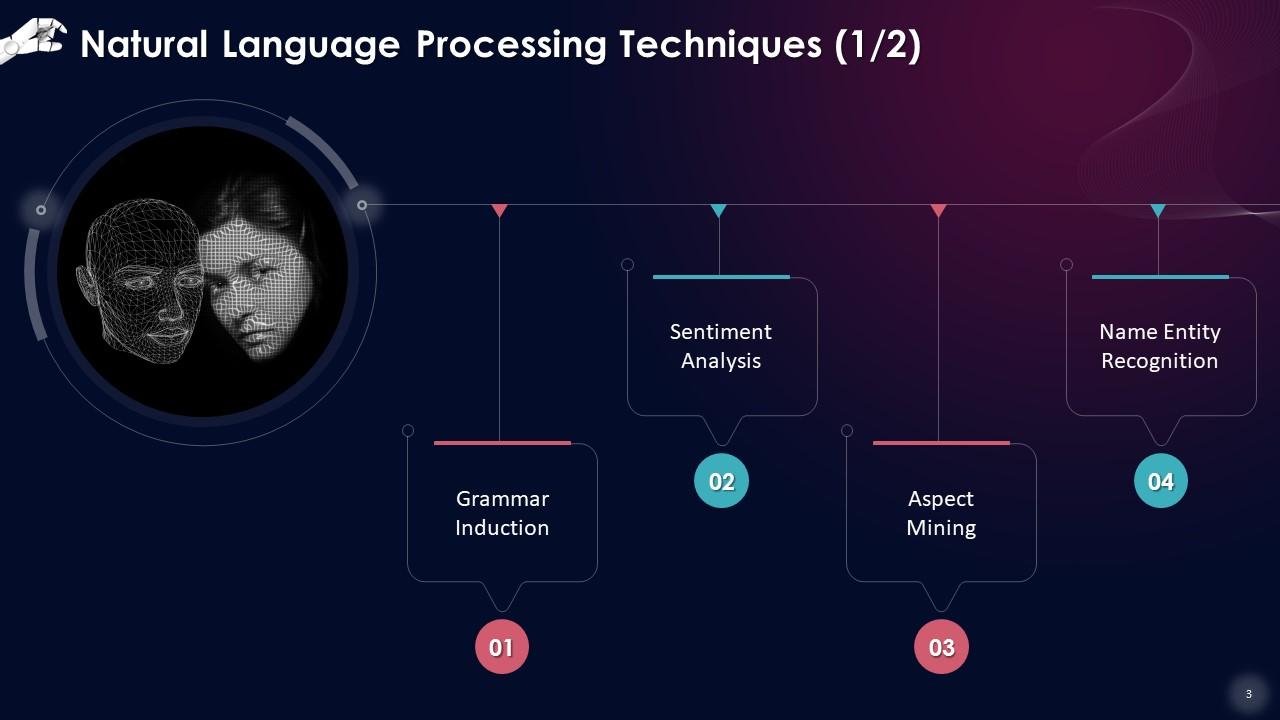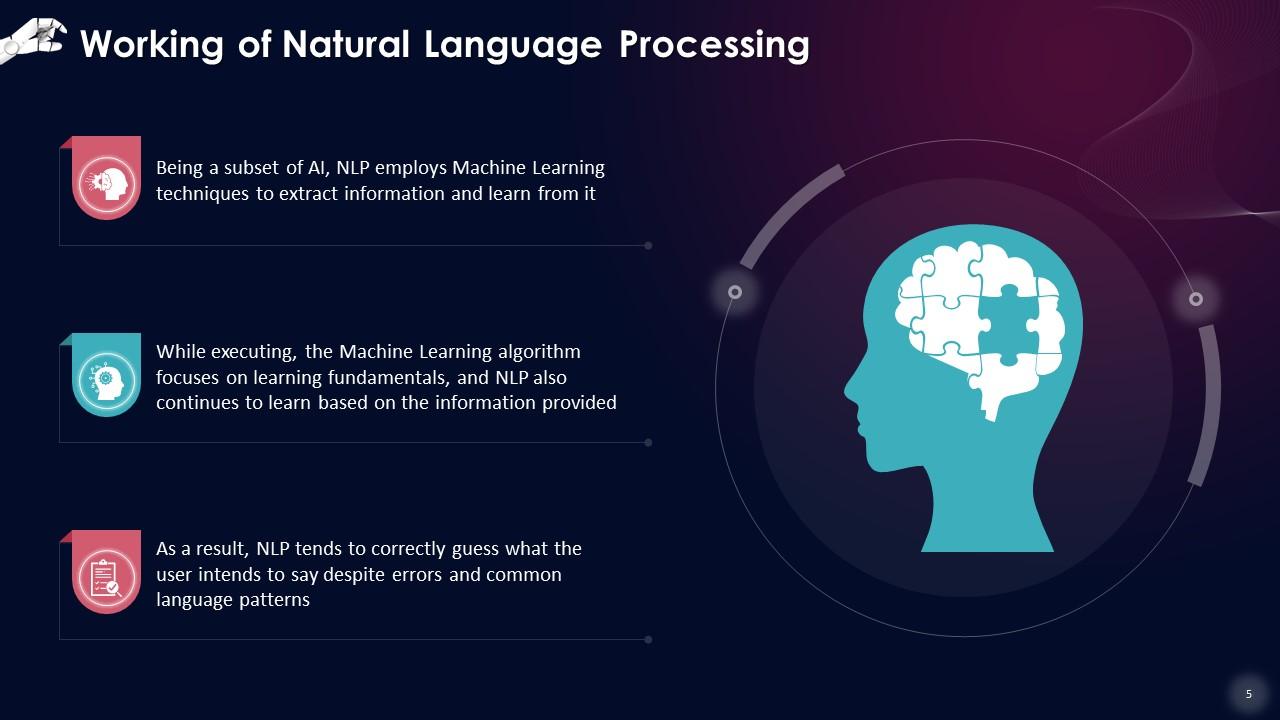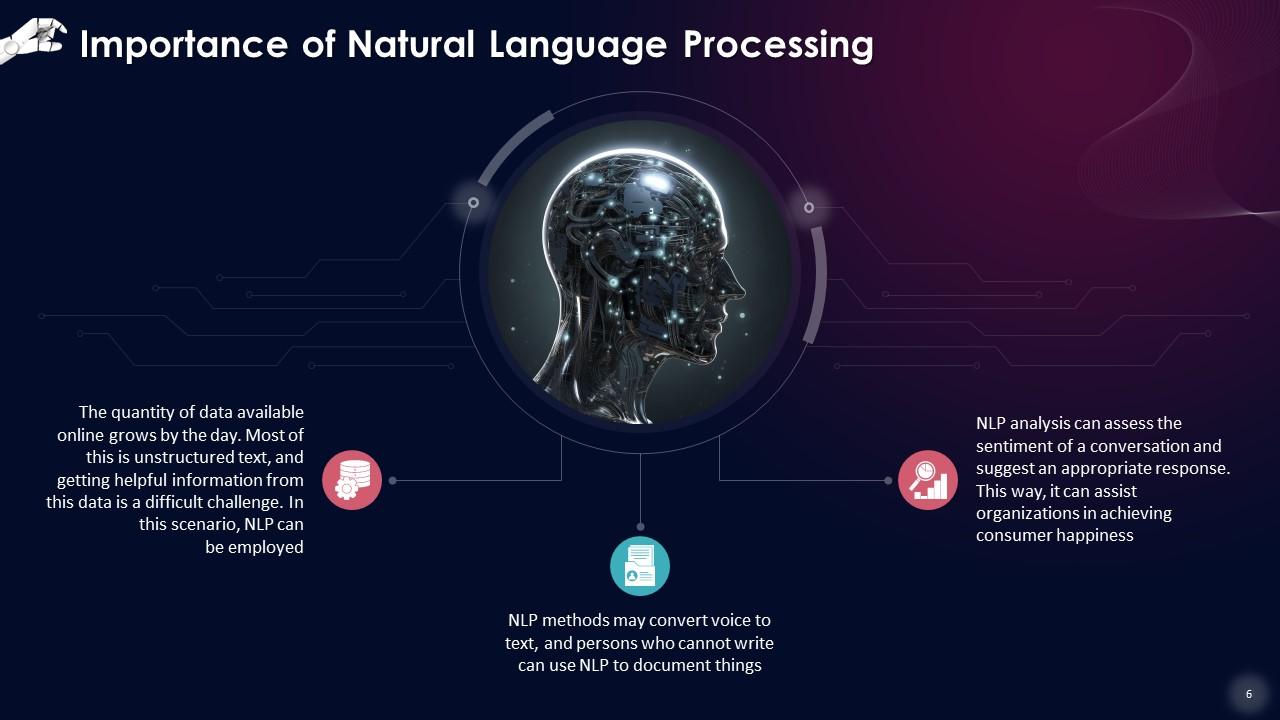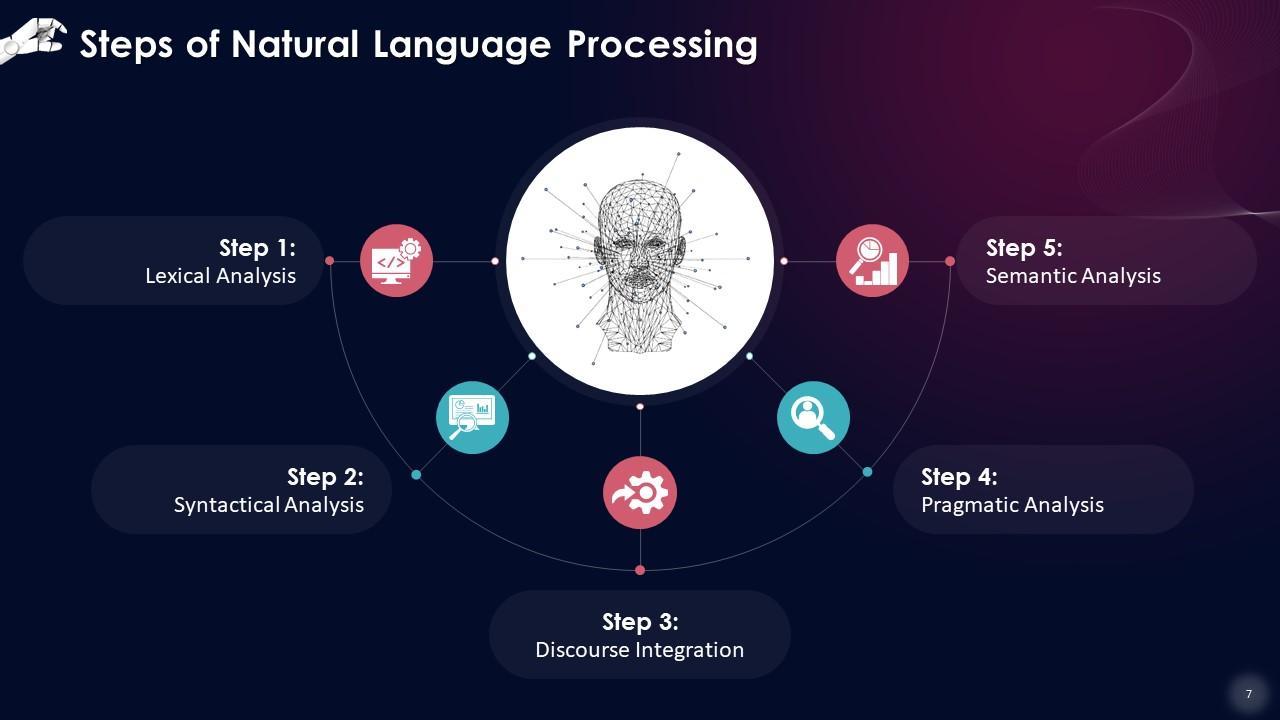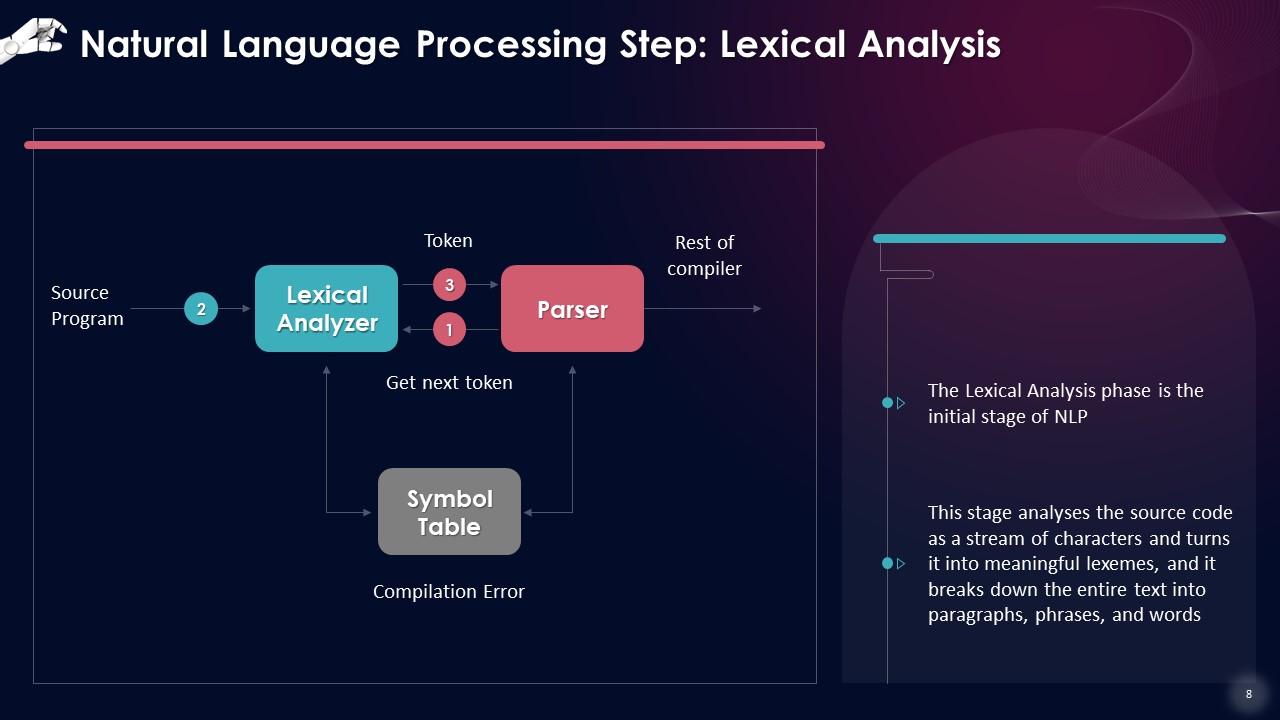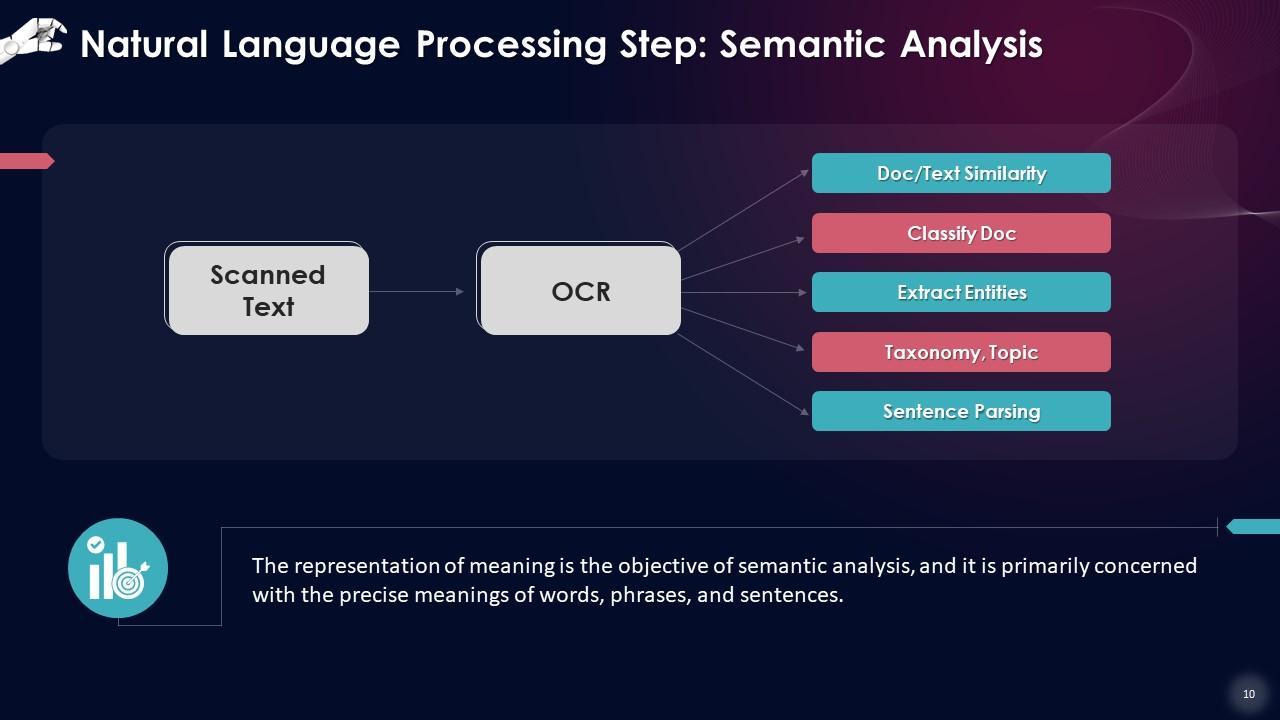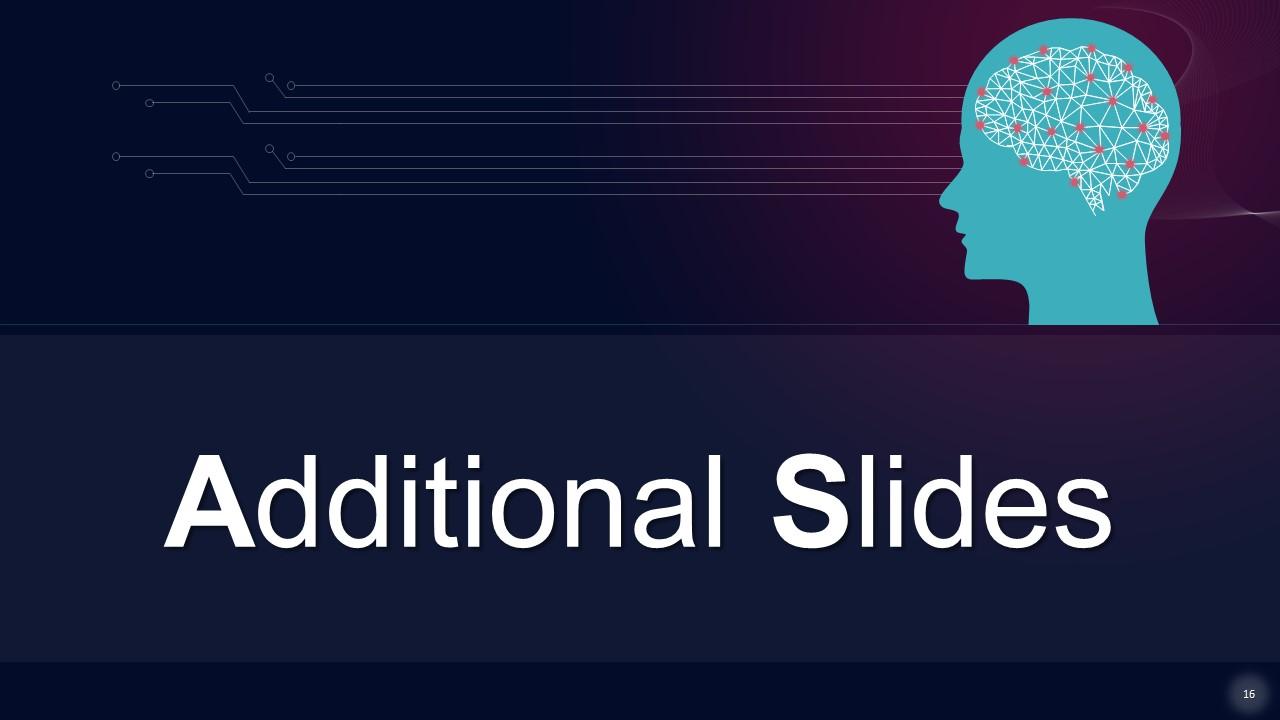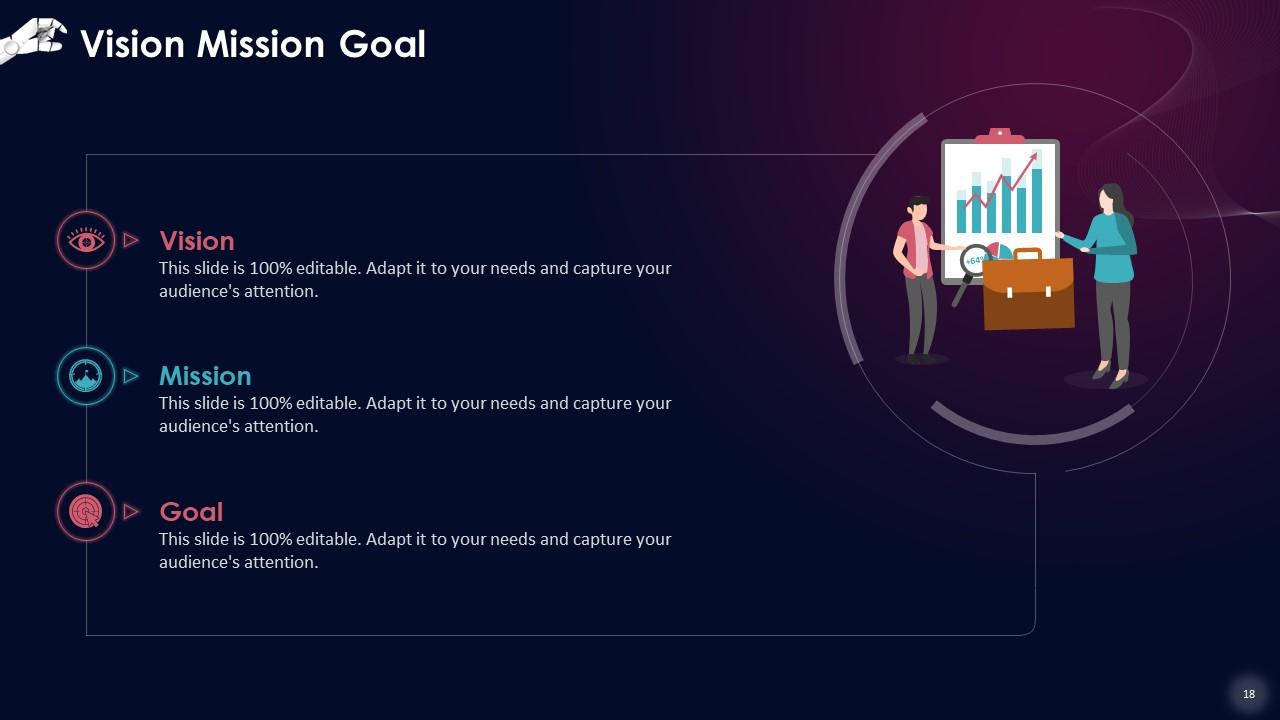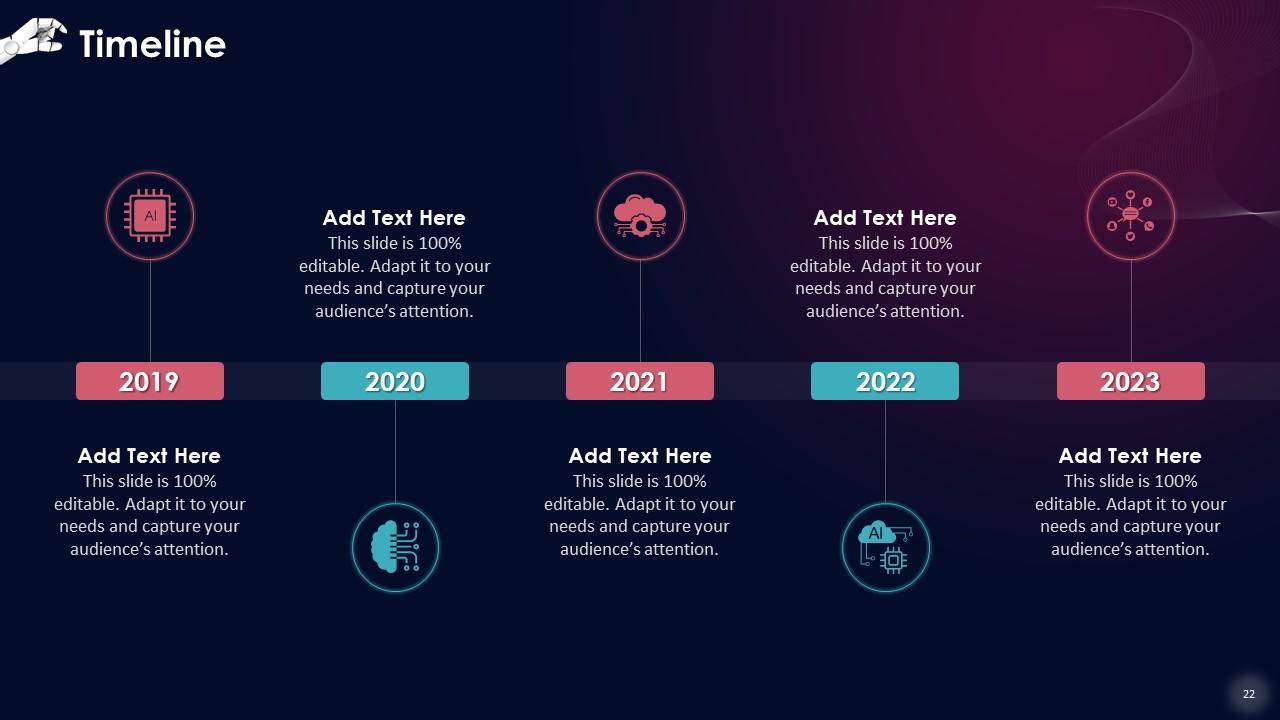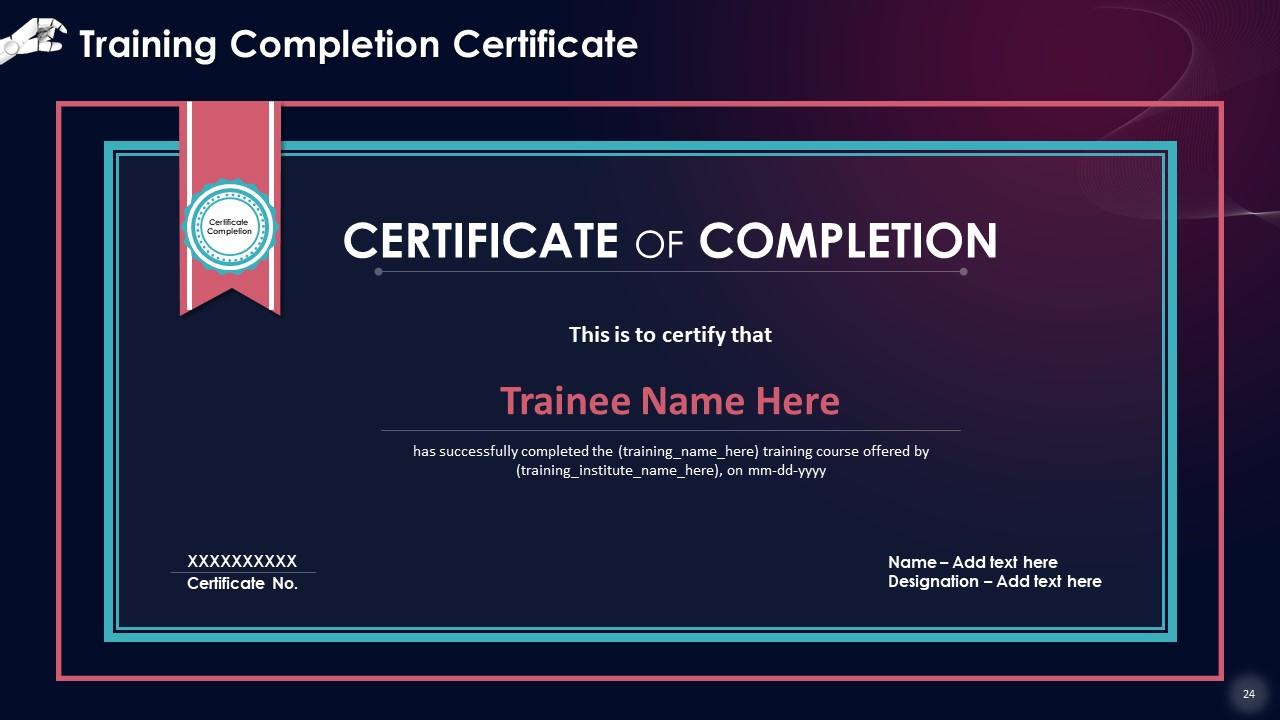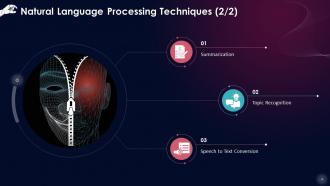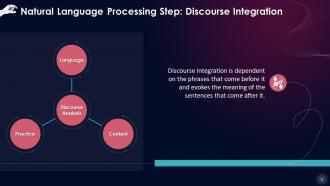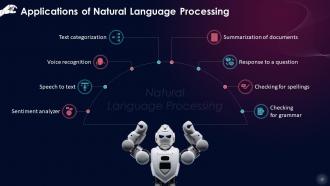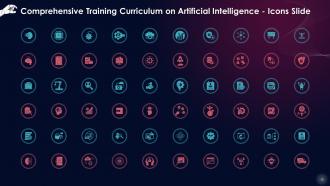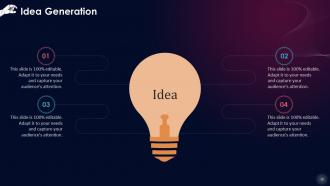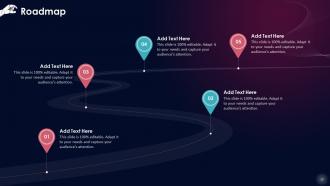Fundamentals Of Natural Language Processing Training Ppt
These slides discus about Natural Language Processing NLP. It is a technology that computers use to interpret and act on human languages such as English. NLP is a subset of AI and cognitive computing. The procedure entails converting voice to text and educating the system to make intelligent decisions or perform activities. The techniques include grammar induction, sentiment analysis, aspect mining, and name entity recognition.
These slides discus about Natural Language Processing NLP. It is a technology that computers use to interpret and act on hu..
- Google Slides is a new FREE Presentation software from Google.
- All our content is 100% compatible with Google Slides.
- Just download our designs, and upload them to Google Slides and they will work automatically.
- Amaze your audience with SlideTeam and Google Slides.
-
Want Changes to This PPT Slide? Check out our Presentation Design Services
- WideScreen Aspect ratio is becoming a very popular format. When you download this product, the downloaded ZIP will contain this product in both standard and widescreen format.
-

- Some older products that we have may only be in standard format, but they can easily be converted to widescreen.
- To do this, please open the SlideTeam product in Powerpoint, and go to
- Design ( On the top bar) -> Page Setup -> and select "On-screen Show (16:9)” in the drop down for "Slides Sized for".
- The slide or theme will change to widescreen, and all graphics will adjust automatically. You can similarly convert our content to any other desired screen aspect ratio.
Compatible With Google Slides

Get This In WideScreen
You must be logged in to download this presentation.
PowerPoint presentation slides
Presenting Fundamentals of Natural Language Processing. These slides are 100 percent made in PowerPoint and are compatible with all screen types and monitors. They also support Google Slides. Premium Customer Support available. Suitable for use by managers, employees, and organizations. These slides are easily customizable. You can edit the color, text, icon, and font size to suit your requirements.
People who downloaded this PowerPoint presentation also viewed the following :
Content of this Powerpoint Presentation
Slide 1
This slide describes that Natural Language Processing is a technology that computers use to interpret and act on human languages such as English. NLP is a subset of AI and cognitive computing. The procedure entails converting voice to text and educating the system to make intelligent decisions or perform activities.
Slide 2
This slide gives an overview of Natural Language Processing, allowing computers to comprehend, conduct actions, and communicate with humans in normal language. It may be used for sending orders to operate, translating voice to text, documenting it, giving directions in navigation, etc.
Slide 3
This slide lists Natural Language Processing techniques such as: grammar induction, sentiment analysis, aspect mining and name entity recognition.
Instructor Notes:
- Grammar Induction: It aids in the use of proper grammar when writing
- Sentiment Analysis: NLP is used to examine the sentence's positive and negative aspects
- Aspect Mining: Aspect mining is used in NLP to discover which aspects are favorable and which are bad
- Name Entity Recognition: It is used to recognize notable people's names, organizations, locations, and dates
Slide 4
This slide states a few of the Natural Language Processing techniques such as: Summarization, Topic Recognition and Speech to Text Conversion
Instructor Notes:
- Summarization: NLP may also summarize the content and offer the text's essence. It scores sentences based on their resemblance to other sentences
- Topic Recognition: NLP examines the text to determine the principal topic to which it is connected. It will extract certain keywords and organize them into categories
- Speech to Text Conversion: Speech to text enables machines to comprehend human language and interpret it with the intent of acting and responding in the same way that people do. The primary idea behind NLP is to feed human language as data to intelligent text-to-speech systems, which may subsequently be used in many fields
Slide 5
This slide showcases the operation of Natural Language Processing. Being a subset of AI, NLP employs machine learning techniques to extract information and learn from it. While executing, the machine learning algorithm focuses on learning fundamentals, and NLP also continues to learn based on the information provided. Due to this, NLP tends to correctly guess what the user intends to say despite errors and common language patterns.
Slide 6
This slide states that the quantity of data available online grows by the day. Most of this is unstructured text, and getting helpful information from this data is a difficult challenge. In this scenario, NLP can be employed. NLP methods may convert voice to text, and persons who cannot write can use NLP to document things. NLP analysis can assess the sentiment of a conversation and suggest an appropriate response. This way, it can assist organizations in achieving consumer happiness.
Slide 7
This slide lists steps involved in Natural Language Processing, starting from the initial phase of Lexical Analysis to the last stage of Pragmatic Analysis.
Slide 8
This slide states that the Lexical Analysis phase is the initial stage of NLP. This stage analyses the source code as a stream of characters and turns it into meaningful lexemes. It is, here, too that it breaks down the entire text into paragraphs, phrases, and words.
Instructor Notes:
A lexeme is a series of characters that are included in the source programme based on a token's matching pattern. It is nothing more than a token instance.
Slide 9
This slide showcases that Syntactic Analysis is used to examine grammar and word arrangements and illustrate the link between words. This approach entails associating words with other words, arranging them in a phrase, and determining their relative significance.
Slide 10
This slide describes that the representation of meaning is the objective of semantic analysis, and it is primarily concerned with the precise meanings of words, phrases, and sentences.
Instructor Notes:
OCR: Optical Character Recognition
Slide 11
This slide states that Discourse Integration is dependent on the phrases that come before it and evokes the meaning of the sentences that come after it. This strategy examines the relative meaning of sentences and the relationships these form with other sentences.
Slide 12
This slide describes that the fifth and final phase of NLP is pragmatic analysis, and it assists in determining the desired impact by employing a set of rules that describe cooperative discussions. This strategy addresses a sentence's real-world meaning.
Slide 13
This slide lists types of Natural language Processing applications like sentiment analyzer, summarization of documents, checking for grammar, and more.
Fundamentals Of Natural Language Processing Training Ppt with all 29 slides:
Use our Fundamentals Of Natural Language Processing Training Ppt to effectively help you save your valuable time. They are readymade to fit into any presentation structure.
-
Such amazing slides with easy editable options. A perfect time-saver.
-
The customer care of SlideTeam is very responsive. I was having a payment issue and they fixed it for me in no time.


